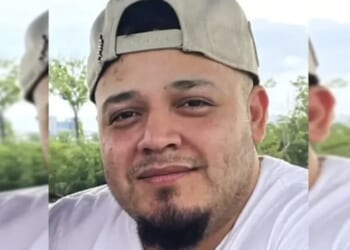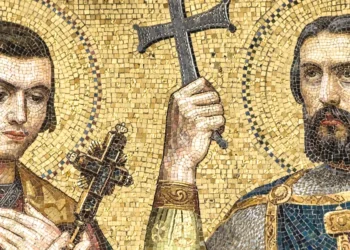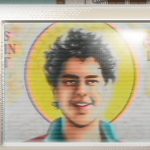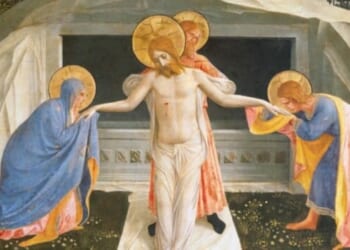Thynne ended up flying seventy-one strike missions with No. 9 Squadron as a Huey helicopter pilot and copilot.
April 30, 2025, marks the fiftieth anniversary of the end of the Vietnam War. Sometimes it’s easy to forget that the United States of America and South Vietnam weren’t the only nations fighting against Communist forces in that war: South Korea and Australia played important roles.
Regarding Australia’s contributions to the war effort, a total of 500 Australian servicemembers lost their lives in the Vietnam War, according to the Australian War Memorial; 478 of these deaths were suffered by the Australian Army, eight by the Royal Australian Navy (RAN), and fourteen by the Royal Australian Air Force (RAAF).
So then, a certain Aussie Vietnam War story caught my eye when it showed up on my MSN newsfeed a week ago: a Military Aviation History channel video titled “Last one out of Vietnam | Huey pilot John ‘JT’ Thynne.” The title is somewhat deceptive, as Thynne, then a pilot officer (equivalent to a 2nd lieutenant in the U.S. Air Force) and now a retired wing commander (equivalent to a U.S. Air Force lieutenant colonel) wasn’t the last Australian servicemember to leave Vietnam, but simply the last of his specific unit.
However, given the timing of Thynne’s story in relation to the anniversaries we just mentioned, it’s a story worth sharing, nonetheless.
RAAF No. 9 Squadron Basics
The unit that then-Pilot Officer Thynne served with was RAAF No. 9 Squadron, which was created in 1939 and saw active service in World War II as a fleet cooperation unit providing seaplane aircrews for seaplanes operating off RAN cruisers. The unit was disbanded on December 31, 1944, but resurrected on June 11, 1962.
According to the Vietnam Veterans Association of Australia info page, 9 Squadron’s Vietnam service history began on the first week of June 1966, when eight of the unit’s UH-1B Iroquois helicopters (better known to its crews and aviation history buffs alike as the “Huey”) and a small maintenance party set sail for that worn-torn Southeast Asian country in the RAN transport (and former WWII Majestic-class light aircraft carrier) HMAS Sydney (Pennant No. A214). The vessel anchored off of Vung Tau (and would eventually earn the nickname “Vung Tau Ferry”) on June 12, and the choppers were flown off its deck to their new home at Vung Air Airfield.
No. 9 Squadron ended up serving with distinction in-country for the next five-and-a-half years, including multiple support missions for the elite Special Air Service (particularly the Battle of Long Tan) and a daring evacuation of a badly wounded six-year-old girl from Binh Gia village in the midst of intense hostile ground fire being directed at their crew’s helicopter. The efforts of helicopter units such as the No. 9 Squadron were credited with bringing down the death rate of the wounded in military hospitals reduced from 4.5 percent in WWII to just 2.6 percent in Vietnam.
JT Thynne’s Personal Vietnam Exodus Story
Thynne ended up flying seventy-one strike missions with No. 9 Squadron as a Huey pilot and copilot. (Flying was in his blood, as he had an uncle who flew 103 bomber missions in WWII.) It was on December 18, 1971, that he indeed became the last No. 9 Squadron troop to depart Vietnam, doing so on a C-130 Hercules after the rest of his mates had already departed either via the aforementioned “Vung Tau Ferry” or a QANTAS “Freedom Bird” charter flight. In Wing Commander Thynne’s own words:
“So everybody would go on that except one person who had to act as a safe hand officer for the squadron safes with all the secret stuff to come on a Hercules. And the person selected for that would always be the junior Pilot Officer. Guess who that was?”
From there, Thynne shares an amusing story of his last night in-country and the rousing sendoff he received from No. 9 Squadron’s messmates and friendly rivals, No. 35 Squadron, which flew the fixed-wing DHC-4 Caribou, and, prior to the departure of Thynne’s squadron mates, had been heavily outnumbered by the Huey drivers.
“So it’s pretty hard for them to have a big impact in the bar. You know, we’d have a few and be putting them in their place because they’re ‘plank drivers,’ fixed-wing and things like that, you know. So, of course, when everybody left on the 16th, on the night of the 16th, there was [sic] how many helicopter pilots? One, and how many Caribou pilots, all 12. And they weren’t doing very much flying. So there were only two of them that couldn’t drink. So I got lined up and was not allowed to stop drinking. We finished about 2:00 in the morning and when they woke me up to get me to the plane the next morning, I was still drunk. It was horrible.
But no rest for the weary, as the still-inebriated Pilot Officer Thynne was roused at 6:00 a.m. for a more official going-away breakfast of etherized eggs and champagne (yes, more booze) before he finally boarded the Freedom Bird, at which point:
“I think I slept on top of the safes, on top of the metal of the safes. I didn’t feel anything for about 6 or 8 hours.”
Luckily, both the booze-addled aviator and the safes safely arrived in Darwin, successfully completed the transfer of the classified material to RAAF Base Amberley, and, long story short, Thynne hitchhiked home afterward, surprising his mother with a knock on the door.
Where Is He Now?
None of the sources I consulted tell us where Thynne is living these days, but judging from the background scenery of his interview, he appears to be living quite comfortably in retirement, and deservedly so. Bravo Zulu, Wing Commander (ret.) Thynne!
About the Author: Christian D. Orr
Christian D. Orr was previously a Senior Defense Editor for National Security Journal (NSJ) and 19FortyFive. He is a former Air Force Security Forces officer, Federal law enforcement officer, and private military contractor (with assignments worked in Iraq, the United Arab Emirates, Kosovo, Japan, Germany, and the Pentagon). Chris holds a B.A. in International Relations from the University of Southern California (USC) and an M.A. in Intelligence Studies (concentration in Terrorism Studies) from American Military University (AMU). He has also been published in The Daily Torch, The Journal of Intelligence and Cyber Security, and Simple Flying. Last but not least, he is a Companion of the Order of the Naval Order of the United States (NOUS). If you’d like to pick his brain further, you can ofttimes find him at the Old Virginia Tobacco Company (OVTC) lounge in Manassas, Virginia, partaking of fine stogies and good quality human camaraderie.
Image: Wikimedia Commons.


















